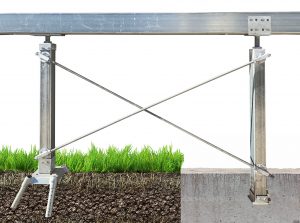Latest News.
Footings 101: What are Footings on a House and How are Innovations Making Them Even Better?
November 25, 2021 // BMSA Footing Solutions
What are footings on a house? Why are they important? And what innovations are making them even better? We’ve got all those answers and more.
Footings are a vital part of any foundation construction or renovation. Traditionally constructed of concrete with rebar reinforcement or even timber, their purpose is to support. When it comes to a residential dwelling, footings are an important part of keeping the foundation stable, the home level and everything structurally sound. But most importantly, it ensures that the homeowners are safe and comfortable.
Footings 101
- Part 1: What are footings on a house?
- Part 2: Why are footings important?
- Part 3: What innovations are making footings even better?
Part 1: What are footings on a house?
Every home has a foundation. And every foundation has footings. But what are footings on a house?
Well, a house needs a foundation to support its weight, and to create a flat, stable base for building on. It also helps to separate all the wooden building materials from contact with the ground, where they might otherwise rot and be vulnerable to termite infestations. These foundations are often (but not always) made of stone, brick, concrete block or poured concrete.
Foundations are typically supported by footings. A footing is simply the bottom part of the foundation. They are generally built wider than the foundation wall and are designed to help spread the weight of the building over the soil foundation and stop it from settling or moving. The name derives from the fact that they resemble the ‘foot’ of the foundation.
When it comes to footings there have traditionally been three different types used:
- concrete block
- poured concrete and
- post-and-pier.
The types that are used, and the sizes that are needed, are dependent on the type and size of the home being built, the soil quality and applicable building codes. And the choice of footing is incredibly important because a footing that does a great job in good soil, might not work well in weak bearing conditions.
Part 2: Why are footings important?
It’s important to get footings right in any building and every type of property, including residential homes. When you get the footings wrong it can lead to excessive and uneven settling and even, in some extreme but uncommon situations, outright failure.
Even when outright failure isn’t on the table, uneven settling of even a centimetre or two is enough to cause cracks in masonry, tile or drywall. Wooden framing can become skewed and doors and windows difficult (or impossible) to open and close. You might also see tilting chimneys, bulging or sagging walls and exterior stairs tilting or sinking. In extreme cases, the floors will also become uneven, and items placed on them will roll across the floor.
Living in a house that is experiencing uneven settling isn’t comfortable or desirable in any way. On the other hand, well-chosen and executed footings will support the foundation and prevent settling, especially important if the home is on difficult soils.
Part 3: What innovations are making footings even better?
Traditionally, when a building project needed a raised floor, your choices were concrete (in the main) or, less commonly, brick, stone or timber as support stumps. Over time, pre-fabricated steel posts came into use. But as they were made to a fixed height, they were also difficult to adjust either during the initial build or later on if needed.
In the same way, in the past when you were faced with failing or badly chosen footings or foundations, you would find yourself in the position of having to jack up the entire house slowly, over a number of days or even weeks, in order level the floors or fix or add new footers. This was a huge expense and a waste of resources and man hours.

But today there are better choices. In fact, footing innovations such as StumpRite House Stumps, have made those inconveniences almost entirely a thing of the past.
With StumpRite both initial builds and later adjustments are easy and stress free. You can level or restump a floor to an extremely accurate degree without using hydraulic jacks just one person with a single tool can make any adjustments that are needed. This means you can get your project done more quickly and efficiently, with fewer steps, fewer tradesmen and less cost to you and the homeowner.
StumpRite is a cutting-edge product that helps you build anywhere, on almost all types of soils and elevations with ease. And with a range of tops for the stumps, StumpRite footings suit almost all bearer arrangements.
Start Right, End Right
Footings aren’t just something to be done and checked off the list. Getting them right is important. But you don’t have to be limited to the way things have always been done. Using new, innovative products like StumpRite will help you save time, money and hassle in the short and long term.
So, when considering the question, ‘what are footings on a house’ we should also consider what are the best, most user friendly and easily adjusted footings available for my project.
